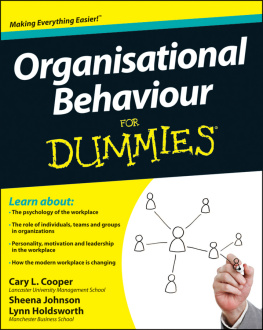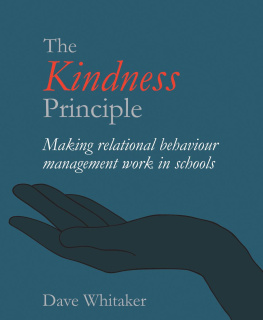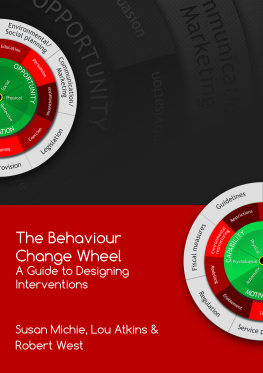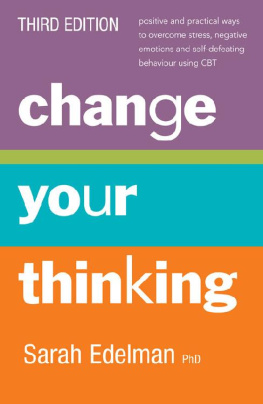Challenging Change
CHALLENGING CHANGE
Behaviour Strategies for Life
TAN CURTIS

JANE CURRY PUBLISHING
First published by
Jane Curry Publishing 2011
[Wentworth Concepts Pty Ltd]
PO Box 780 Edgecliff NSW 2027 Australia
www.janecurrypublishing.com.au
Copyright Tan Curtis 2011
All rights reserved. No part of this book may be reproduced or transmitted in any form or by any means, electronic or mechanical, including photocopying, recording or by any other information storage retrieval system, without prior permission in writing from the publisher.
National Library of Australia
Cataloguing-in-publication data:
National Library of Australia Cataloguing-in-Publication entry Author: Curtis, Tan.
Title: Challenging change / Tan Curtis.
Edition: 1st ed.
ISBN: 9780980721287 (pbk.)
Subjects: Self Help, Psychology, Mental Health, Behaviour, Autism spectrum disorders.
Child psychology.
Child development disorders. Challenging Behaviour, Developmental Disorder,
Dewey Number: 616.85882
Cover photograph: Getty Images
Cover and internal design: Deborah Parry
This book is dedicated to all those people who have granted me the privilege of sharing a part of their lives, whether for one minute or for a lifetime. In your unique way, you have all contributed to the person I have become, so therefore you have contributed to this book. Thank you.
CONTENTS
INTRODUCTION
Behaviour can be defined as every action we do, every word we say and every thought we think. Lack of behaviour is anything we dont do, dont say or dont think. Behaviour and lack of behaviour can be just as influential as each other in regards to impacting on the outcomes we obtain in life. The term challenging behaviour is used to describe a wide range of behaviours. There are many different behaviours that are considered challenging, including naughtiness; inappropriateness; defiance; disobedience; wickedness; noncompliance; rebellion; bad and difficult. People may also exhibit challenging behaviour through tantrums. These terms are not preferred and throughout this book, the term Level 5 Behaviours will be used when referring to such behaviours.
Everyone resorts to using Level 5 Behaviours on some occasions; however they differ between people and may change depending on the situation. These behaviours manifest in a variety of ways, such as self-harm, violence, aggression, emotional outbursts, hyperventilation, panic attacks, over or under eating, substance use, withdrawal from society or passive resistance. Challenging behaviour is simply any unwanted behaviour used by any person or any wanted behaviour that is not used by a person.
To successfully change our unwanted behaviour, at first we must learn why we are behaving in a particular way. This is known as the function of behaviour. Level 5 Behaviours happen for a reason, usually because we are trying to regain
some control over a situation and are trying to communicate a message to someone. Before we try to change our behaviour, or influence the behaviour of someone else, we need to identify the reasons why we are behaving in a particular way. Once we understand our behaviour we can then design and develop strategies to bring about long-term behavioural change change that will lead to improvement in our quality of life and thus a brighter future for ourselves and for those we share our life with.
Challenging Change provides a number of behaviour strategies that can be adapted for your own use, or for use with other people who you are supporting to change their own unwanted behaviours. There are also lots of examples based on real life of how people have changed their own behaviour. The strategies and templates can be used multiple times and in multiple situations.
This book will take you on a personal journey, and I wish you all the strength and courage it will take along the path of behaviour change. Remember, although it may be daunting at first, ultimately, the changes you make will lead to your use of more desired behaviours and thus impact positively on your future.
Tan Curtis
Tan Curtis runs a behaviour changing clinical practice on the Gold Coast. All of the templates and behaviour strategies presented in Challenging Change are based on academic research or recognised professional practice, and have been implemented by numerous clients at the Fabic clinic leading to favourable change in their own quality of life.
CHAPTER ONE
UNDERSTANDING BEHAVIOUR
TEN ASSUMPTIONS OF BEHAVIOUR
When attempting to understand and change your behaviour, or influence the behaviour change in another person, it is important to remember the following ten assumptions:
1. All behaviour happens for a reason an attempt to regain lost control
Although Level 5 Behaviours are considered unwanted and often inappropriate, it is essential to understand why this behaviour is happening. Level 5 Behaviours are a response to events that we find difficult to deal with, such as situations in which we perceive we have lost some control over. We often think that Level 5 Behaviours are our only means of dealing with a difficult situation and regaining some control.

REMEMBER:
Level 5 Behaviours are an attempt to regain some control over a situation in which an individual perceives he or she has minimal control.

2. There are always warning behaviours first
Behaviours can be viewed on a behaviour scale from Level 1 to Level 5. Level 1 is when we are experiencing a situation that suits our needs, where there are minimal challenges and we do not feel anxious situations we feel we have a high degree of control over. Level 5 is at the opposite end of the scale, when we are in a situation in which we perceive we have minimal control. This is when we have least control over our behaviour and it is likely that a meltdown of some description will occur. Every persons meltdowns will look different but Level 5 is the highest intensity behaviour that will be seen during that particular occurrence of the challenging situation. The low-level behaviours, Levels 2, 3 and 4, are the behaviours that occur before the Level 5 Behaviours. These behaviours are warning signs indicating we are presented with a situation which we dont have the skills (ie appropriate behaviours) to manage effectively. The low-level behaviours may be internal (responses that happen within us that we cant see) or external (actions and vocalisations that can be seen and heard by another person) but they are all behaviours that happen before the Level 5 Behaviours.
Challenging behaviours | LEVEL 5
020% perceived control |
Warning behaviours | LEVEL 4
2040% perceived control LEVEL 3
4060% perceived control LEVEL 2
6080% perceived control |
Wanted behaviours | LEVEL 1
80100% perceived control |

REMEMBER:
Level 2, 3 or 4 Behaviours are warning signs to say:
Help! Im finding something difficult and I dont know how to change this difficult situation appropriatelyHELP PLEASE!

Next page















